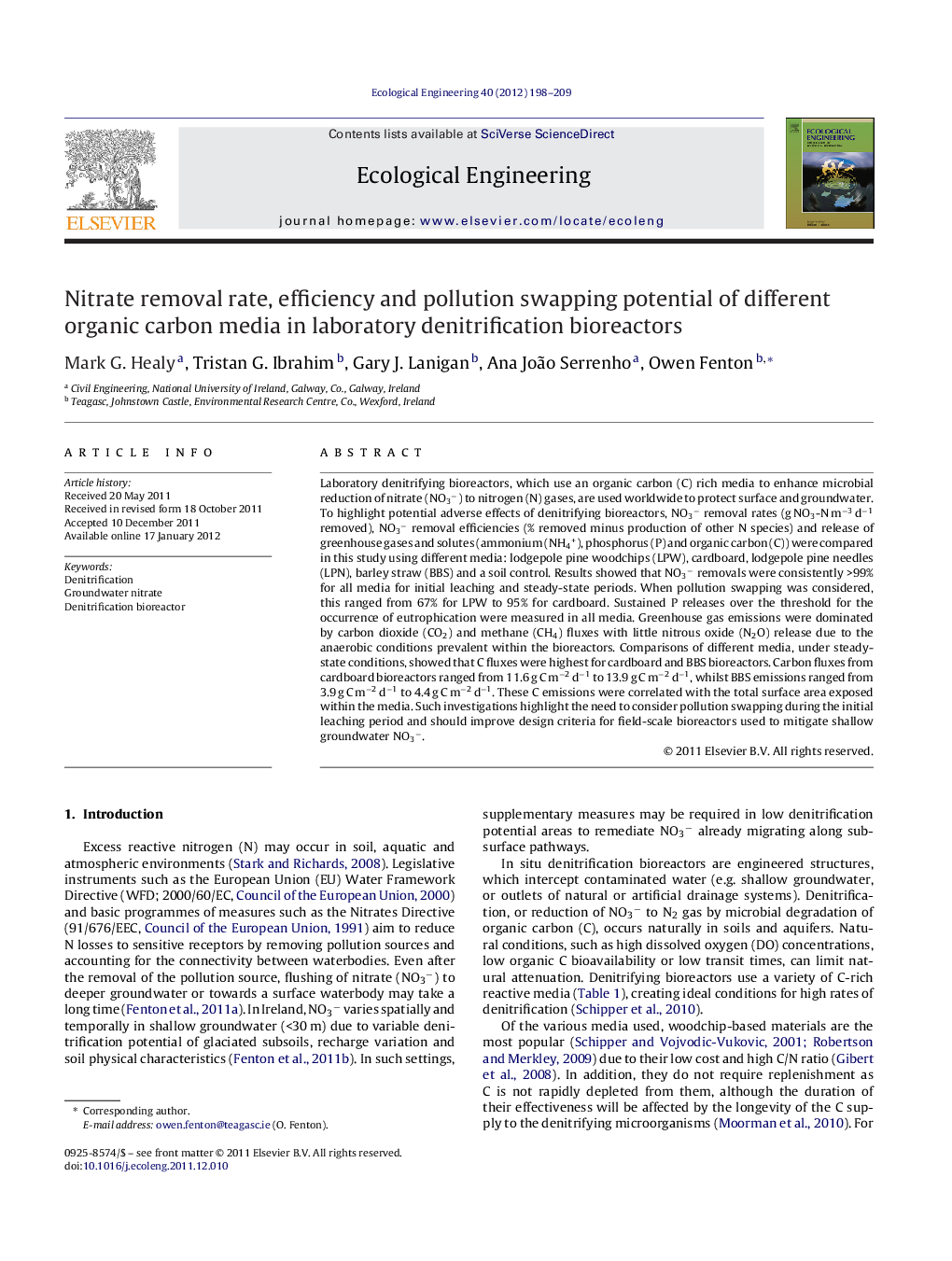| کد مقاله | کد نشریه | سال انتشار | مقاله انگلیسی | نسخه تمام متن |
|---|---|---|---|---|
| 4389967 | 1618058 | 2012 | 12 صفحه PDF | دانلود رایگان |

Laboratory denitrifying bioreactors, which use an organic carbon (C) rich media to enhance microbial reduction of nitrate (NO3−) to nitrogen (N) gases, are used worldwide to protect surface and groundwater. To highlight potential adverse effects of denitrifying bioreactors, NO3− removal rates (g NO3-N m−3 d−1 removed), NO3− removal efficiencies (% removed minus production of other N species) and release of greenhouse gases and solutes (ammonium (NH4+), phosphorus (P) and organic carbon (C)) were compared in this study using different media: lodgepole pine woodchips (LPW), cardboard, lodgepole pine needles (LPN), barley straw (BBS) and a soil control. Results showed that NO3− removals were consistently >99% for all media for initial leaching and steady-state periods. When pollution swapping was considered, this ranged from 67% for LPW to 95% for cardboard. Sustained P releases over the threshold for the occurrence of eutrophication were measured in all media. Greenhouse gas emissions were dominated by carbon dioxide (CO2) and methane (CH4) fluxes with little nitrous oxide (N2O) release due to the anaerobic conditions prevalent within the bioreactors. Comparisons of different media, under steady-state conditions, showed that C fluxes were highest for cardboard and BBS bioreactors. Carbon fluxes from cardboard bioreactors ranged from 11.6 g C m−2 d−1 to 13.9 g C m−2 d−1, whilst BBS emissions ranged from 3.9 g C m−2 d−1 to 4.4 g C m−2 d−1. These C emissions were correlated with the total surface area exposed within the media. Such investigations highlight the need to consider pollution swapping during the initial leaching period and should improve design criteria for field-scale bioreactors used to mitigate shallow groundwater NO3−.
Journal: Ecological Engineering - Volume 40, March 2012, Pages 198–209